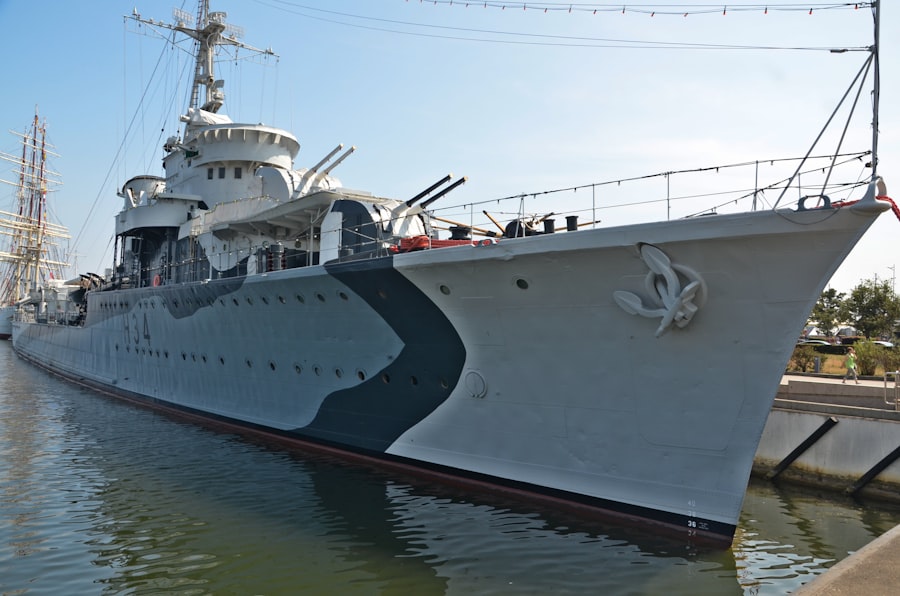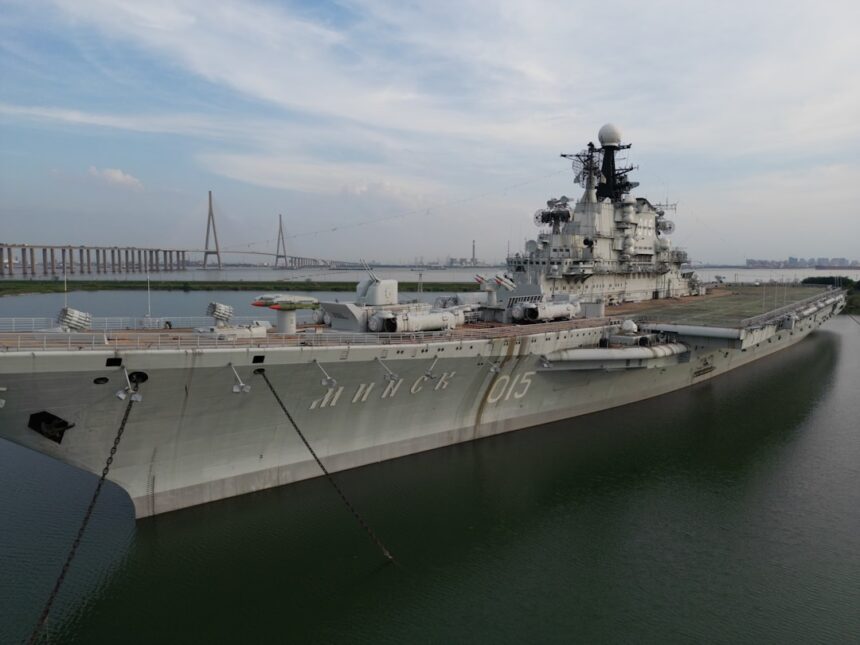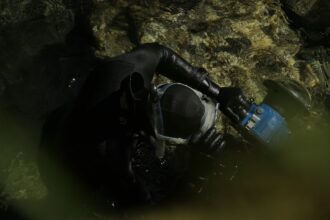Russian naval doctrine has evolved significantly over the centuries, reflecting the country’s geopolitical ambitions and security needs. The doctrine serves as a framework for understanding how Russia perceives its maritime interests and the role of its navy in achieving national objectives. As a nation with vast coastlines and significant maritime resources, Russia’s naval strategy is not merely a military concern but also a vital component of its economic and political aspirations.
The Russian Navy, with its storied history, has undergone transformations that mirror the changing dynamics of global power and regional conflicts. In recent years, the resurgence of Russian naval capabilities has drawn attention from analysts and policymakers worldwide. The doctrine emphasizes the importance of maintaining a formidable naval presence to protect national interests, deter potential adversaries, and project power beyond its borders.
This article will explore the historical evolution of Russian naval strategy, its key components, and the implications for national defense and international relations.
Key Takeaways
- Russian naval doctrine emphasizes the protection of national interests and the projection of power in key strategic regions.
- The historical evolution of Russian naval strategy has been shaped by a focus on maintaining access to warm-water ports and countering potential threats from the West.
- Key components of Russian naval doctrine include nuclear deterrence, maritime power projection, and anti-access/area denial capabilities.
- The Russian Navy plays a crucial role in national defense, particularly in safeguarding the country’s maritime borders and interests in the Arctic and Black Sea regions.
- Russia’s naval presence in the Arctic is driven by the region’s growing strategic importance and the potential for resource exploitation, as well as the need to protect vital sea lanes.
Historical Evolution of Russian Naval Strategy
The roots of Russian naval strategy can be traced back to the early days of the Tsardom, when Peter the Great recognized the necessity of a strong navy to secure Russia’s position as a great power. The establishment of the Russian Navy in the early 18th century marked a pivotal moment in the country’s maritime history. Peter’s vision was to create a fleet capable of competing with established naval powers such as Britain and Sweden.
This ambition laid the groundwork for future naval developments, which would oscillate between periods of expansion and contraction depending on the political climate. Throughout the 19th and 20th centuries, Russian naval strategy continued to evolve in response to both internal and external pressures. The Russo-Japanese War of 1904-1905 exposed significant weaknesses in the Russian Navy, leading to a reevaluation of naval priorities and strategies.
The Soviet era brought about a dramatic transformation, as the navy became a crucial instrument of Cold War power projection. The focus shifted towards developing a blue-water navy capable of operating globally, with an emphasis on nuclear submarines and aircraft carriers. This historical trajectory illustrates how Russia’s naval doctrine has been shaped by its aspirations for great power status and the need to adapt to changing geopolitical realities.
Key Components of Russian Naval Doctrine

At the heart of Russian naval doctrine are several key components that define its strategic objectives and operational capabilities. One of the primary tenets is the emphasis on deterrence, particularly in the context of nuclear capabilities. The Russian Navy plays a critical role in maintaining a credible nuclear deterrent, with ballistic missile submarines serving as a cornerstone of this strategy.
Another essential aspect of Russian naval doctrine is the concept of maritime security. This encompasses not only the protection of territorial waters but also the safeguarding of vital sea lines of communication (SLOCs) that are crucial for trade and resource access.
The doctrine recognizes that control over maritime routes is essential for economic stability and national security. Additionally, Russia’s approach to maritime security includes an emphasis on anti-access/area denial (A2/AD) capabilities, which aim to restrict adversaries’ freedom of movement in contested waters.
Role of the Russian Navy in National Defense
| Metrics | Data |
|---|---|
| Number of Naval Personnel | Over 150,000 |
| Number of Naval Vessels | Around 300 |
| Naval Bases | Over 30 |
| Role in National Defense | Protecting maritime borders, ensuring strategic deterrence, and supporting national security interests |
The Russian Navy plays a multifaceted role in national defense, serving as both a deterrent against external threats and a means of asserting influence in regional conflicts. As tensions with NATO and other Western powers have escalated, the navy has become increasingly central to Russia’s defense posture. The ability to project power through naval operations allows Russia to respond swiftly to perceived threats and protect its interests in key regions.
Moreover, the navy’s role extends beyond traditional military functions; it also encompasses humanitarian missions and disaster relief operations. By demonstrating its capability to respond to crises at sea, the Russian Navy enhances its image as a responsible global actor while simultaneously reinforcing its strategic objectives. This duality underscores the importance of maintaining a robust naval presence that can adapt to various scenarios, from conventional warfare to non-traditional security challenges.
Russia’s Naval Presence in the Arctic
The Arctic region has emerged as a focal point for Russia’s maritime strategy, driven by both environmental changes and geopolitical interests. As melting ice opens new shipping routes and exposes untapped natural resources, Russia has sought to assert its dominance in this strategically significant area. The Northern Fleet, based in Murmansk, plays a crucial role in safeguarding Russia’s Arctic interests, conducting regular patrols and exercises to demonstrate its capabilities.
In addition to military operations, Russia has invested heavily in infrastructure development in the Arctic, including ports and airfields that enhance its operational reach. This commitment reflects a broader strategy aimed at securing economic advantages while countering perceived threats from other Arctic nations. As competition for resources intensifies, Russia’s naval presence in the Arctic will likely continue to grow, further solidifying its position as a key player in this emerging geopolitical landscape.
Russia’s Naval Strategy in the Black Sea

The Black Sea has long been a critical theater for Russian naval operations, serving as both a strategic gateway to the Mediterranean and a buffer against NATO expansion. Following the annexation of Crimea in 2014, Russia has significantly bolstered its naval capabilities in this region, enhancing its ability to project power and influence neighboring states. The Black Sea Fleet has undergone modernization efforts aimed at improving its operational readiness and expanding its range of capabilities.
Russia’s naval strategy in the Black Sea is characterized by a combination of deterrence and assertiveness. By establishing a strong naval presence, Russia seeks to deter potential adversaries while simultaneously projecting power into neighboring territories. This approach has raised concerns among NATO allies, prompting increased military cooperation among member states in response to perceived threats from Russia’s actions in the region.
Russian Naval Power Projection in the Mediterranean
The Mediterranean Sea represents another critical area for Russian naval power projection, where Moscow seeks to expand its influence amid shifting geopolitical dynamics. The Russian Navy has increased its operational presence in this region through regular deployments and joint exercises with allied nations. This strategy not only serves to demonstrate military capabilities but also reinforces diplomatic ties with countries that share common interests.
Russia’s involvement in Syria exemplifies its commitment to maintaining a foothold in the Mediterranean. The establishment of a naval facility at Tartus allows for sustained operations and logistical support for Russian forces engaged in regional conflicts. By projecting power into this vital maritime corridor, Russia aims to counterbalance NATO influence while asserting itself as a key player in Middle Eastern affairs.
Modernization and Expansion of the Russian Navy
In recent years, Russia has embarked on an ambitious modernization program aimed at revitalizing its naval forces. This initiative encompasses various aspects, including shipbuilding, technological advancements, and personnel training. The construction of new vessels—ranging from advanced submarines to surface combatants—reflects Russia’s commitment to enhancing its maritime capabilities.
The modernization efforts are not solely focused on quantity; they also emphasize quality and technological sophistication. Investments in advanced weaponry, such as hypersonic missiles and unmanned systems, are intended to ensure that the Russian Navy remains competitive on the global stage. As these modernization initiatives progress, they will likely reshape the balance of power at sea and influence regional security dynamics.
Maritime Security and Anti-Access/Area Denial (A2/AD) Capabilities
A cornerstone of Russian naval doctrine is its focus on maritime security through anti-access/area denial (A2/AD) capabilities. This strategy aims to create a formidable defensive perimeter that complicates adversaries’ ability to operate freely within contested waters. By leveraging advanced missile systems, submarines, and surveillance technologies, Russia seeks to deter potential aggressors while safeguarding its maritime interests.
The implementation of A2/AD strategies is particularly evident in regions such as the Baltic Sea and the Black Sea, where Russia has established robust defensive networks designed to challenge NATO operations. These capabilities not only enhance deterrence but also provide Russia with significant leverage in regional conflicts, allowing it to dictate terms during crises while complicating adversaries’ military planning.
Cooperation and Competition with NATO and Other Navies
The relationship between Russia and NATO navies is characterized by both cooperation and competition, reflecting broader geopolitical tensions. While there have been instances of joint exercises and dialogues aimed at reducing misunderstandings at sea, underlying rivalries persist. The presence of NATO forces near Russian borders has prompted Moscow to adopt a more assertive posture regarding its naval operations.
In addition to NATO, Russia’s interactions with other navies—such as those from China or regional powers—illustrate its desire to forge strategic partnerships while countering Western influence. These collaborations often involve joint exercises or arms sales that enhance interoperability between allied forces. However, they also serve as a reminder of Russia’s intent to challenge Western dominance in key maritime domains.
Future Trends in Russian Naval Doctrine
Looking ahead, several trends are likely to shape the future of Russian naval doctrine. As global power dynamics continue to shift, Russia will likely prioritize maintaining a strong naval presence capable of responding to emerging threats while safeguarding national interests. The ongoing modernization efforts will play a crucial role in ensuring that the navy remains competitive amid evolving technological landscapes.
Additionally, as climate change alters maritime routes and access to resources becomes increasingly contested, Russia’s focus on the Arctic will likely intensify. The interplay between military capabilities and economic interests will drive strategic decisions regarding resource extraction and territorial claims in this region. In conclusion, Russian naval doctrine reflects a complex interplay between historical legacies, contemporary challenges, and future aspirations.
As it continues to evolve, understanding these dynamics will be essential for comprehending Russia’s role on the global stage and its impact on international maritime security.
The Russian naval doctrine has evolved significantly in recent years, reflecting the country’s strategic priorities and maritime ambitions. For a deeper understanding of these developments, you can explore the article on naval strategies and their implications in modern warfare. For more insights, check out this related article on In The War Room.
WATCH THIS! The Secret Russian Weapon That Terrifies NATO
FAQs
What is the Russian naval doctrine?
The Russian naval doctrine is a set of principles and guidelines that govern the use of the Russian Navy in both peacetime and wartime. It outlines the Navy’s roles, missions, and strategies in protecting Russia’s maritime interests and national security.
What are the key components of the Russian naval doctrine?
The key components of the Russian naval doctrine include maintaining a credible naval presence in strategic areas, protecting Russia’s maritime borders, ensuring the security of sea lines of communication, and projecting power and influence in the global maritime domain.
How does the Russian naval doctrine differ from other naval doctrines?
The Russian naval doctrine places a strong emphasis on maintaining a blue-water navy capable of operating in distant waters, as well as on the development of advanced naval technologies and capabilities. It also prioritizes the protection of Russia’s maritime interests in the Arctic region.
What are the main challenges and threats addressed in the Russian naval doctrine?
The Russian naval doctrine addresses a range of challenges and threats, including potential conflicts with NATO and other maritime powers, the protection of Russia’s maritime borders and resources, countering piracy and terrorism at sea, and ensuring the security of Russia’s nuclear deterrent forces.
How does the Russian naval doctrine impact international maritime security?
The Russian naval doctrine has implications for international maritime security, as it shapes Russia’s naval activities and interactions with other navies in key strategic areas such as the Baltic Sea, Black Sea, Mediterranean Sea, and Arctic Ocean. It also influences Russia’s participation in international naval exercises and operations.




